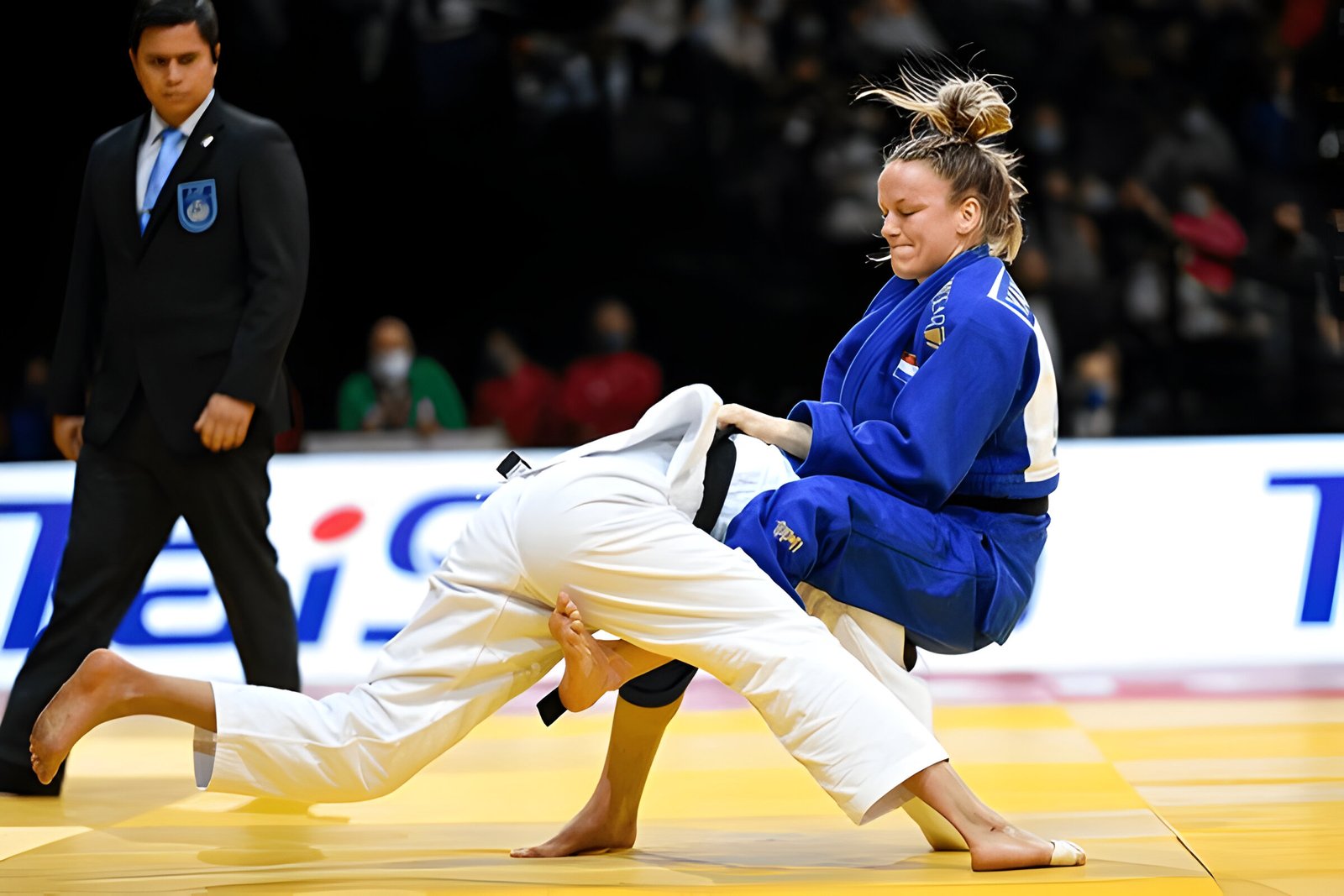Image Credits : Shutterstock
The world of wrestling has long been dominated by male athletes, but a new wave of female wrestlers is challenging the status quo. Girls who wrestle guys are breaking barriers and proving their mettle on the mat, showcasing their strength, skill, and determination. This growing trend in mixed wrestling has sparked conversations about gender equality in sports and has opened up new opportunities for female athletes to compete at the highest levels.
As more girls join wrestling teams and participate in wrestling tournaments, they face unique challenges and obstacles. From overcoming societal stereotypes to adapting wrestling moves for different body types, female wrestlers are carving out their place in the sport. This article explores the rise of teen girl wrestling, the strategies used in wrestling practice, and the impact of weight classes on competition. It also highlights success stories of female wrestlers who have made their mark in state tournaments and beyond, inspiring the next generation of athletes to step onto the mat and showcase their talents.
Table of Contents
ToggleBreaking Barriers in a Male-Dominated Sport
Pioneering female wrestlers
Women’s wrestling in the United States began in 1972 after the signing of Title IX legislation. This law prohibits discrimination based on sex in educational programs and activities. Initially, few women competed in men’s divisions. Tricia Saunders made history in 1992 by becoming the first U.S. woman wrestler to claim a Senior World Title, winning Gold at the Women’s World Championships in France. She later became the first woman inducted into the National Wrestling Hall of Fame as a Distinguished Member in 2006.
Changing regulations
The wrestling community has been working to create a more welcoming environment for female athletes. The National Federation of State High School Associations reported over 50,000 young women wrestling at the high school level in the past year, marking a 55% increase from the previous year. Efforts are underway to develop women-specific singlets and create a girls’ practical uniform guide. This collaboration between the National Wrestling Coaches Association, USA Wrestling, and the National Federation of State High School Associations aims to provide resources for girls-specific uniforms and sports bras, enhancing comfort and confidence for female competitors.
Impact on wrestling culture
The rise of women’s wrestling has had a significant impact on the sport’s culture. Despite facing stereotypes and challenges, female wrestlers have proven their mettle on the mat. The sport has become a platform for showcasing not only physical strength but also character and resilience. Women’s wrestling has grown at an alarming rate, with participation numbers increasing from 804 high school female wrestlers in 1994 to 13,496 in 2016. This growth has led to the establishment of 30 varsity programs across the nation and increased participation in women’s wrestling compared to several NCAA-sanctioned sports.
Training and Preparation Strategies
Strength and Conditioning
Female wrestlers need to focus on building strength, agility, and endurance through regular training sessions. Strength training is not optional but a requirement for success in wrestling. A comprehensive program should include exercises for upper body, lower body, and core strength. Front squats are particularly effective for developing leg strength and mat performance. Additionally, incorporating exercises like power snatches and pull-ups can enhance explosive power and upper body strength.
Technical Skill Development
To excel in wrestling, girls should master fundamental techniques such as takedowns, escapes, and pins. Practicing these moves consistently improves skills and confidence during matches. It’s beneficial to focus on two takedowns, two pinning combinations, and two escapes or reversals, aiming to become exceptionally proficient in these chosen techniques. Adapting techniques to leverage a lower center of gravity and hip strength, such as the whizzer defense, can be particularly advantageous for female wrestlers.
Mental Toughness
Mental preparation is crucial for success in wrestling. Coaches often emphasize the importance of being “mentally tough” to handle the sport’s stressful aspects. To develop mental toughness, wrestlers should practice putting themselves in uncomfortable positions during training. This approach helps them remain calm and confident when facing difficult situations in actual matches. Additionally, resisting the urge to complain and pushing through challenges can significantly enhance mental resilience.
Success Stories and Role Models
High school champions
Audrey Levendusky’s journey from youth wrestling star to varsity state champion showcases the potential for success in girls’ wrestling. Her story of perseverance, nearly giving up on the sport before achieving greatness, serves as an inspiration to young female wrestlers. Another remarkable example is Nina Makem, who moved to the United States in 2015 and started wrestling in 2018. In less than a year, she became a high school All-American, demonstrating the rapid progress possible in the sport.
Collegiate wrestlers
Miranda O’Donnell made history as South Dakota’s first female college wrestler, paving the way for future generations. The growth of women’s wrestling at the collegiate level has been significant, with participation numbers increasing from 804 high school female wrestlers in 1994 to 13,496 in 2016. This surge has led to the establishment of 30 varsity programs across the nation, providing more opportunities for female wrestlers to compete at higher levels.
Olympic contenders
The Olympic stage has become a realistic goal for many female wrestlers. Athletes like Sarah Hildebrandt, who won bronze at the Tokyo 2020 Olympics, continue to inspire. Hildebrandt’s journey highlights the importance of mental preparation and embracing one’s strengths and flaws. The increased support for women’s wrestling, including financial backing and improved training opportunities, has allowed athletes to focus solely on their sport, enhancing their chances of Olympic success.
Conclusion
The rise of girls wrestling guys has brought about a sea change in the sport of wrestling. This trend has an impact on not just the athletes themselves, but also on the broader wrestling community and sports culture as a whole. The growth in participation, coupled with changes in regulations and training strategies, is paving the way to create more opportunities for female wrestlers to compete and excel at various levels.
Looking ahead, the future of women’s wrestling appears bright and full of potential. As more girls step onto the mat, they’re not just competing; they’re inspiring the next generation of athletes to break barriers and chase their dreams. The success stories of high school champions, collegiate wrestlers, and Olympic contenders serve as powerful examples of what’s possible when determination meets opportunity. This ongoing evolution in wrestling is sure to keep shaping the sport for years to come.
FAQs
1. Is it possible for girls to defeat boys in wrestling?
Yes, girls can and do defeat boys in wrestling. This is a common occurrence, especially since many girls who are interested in wrestling often compete against boys in their high school or middle school teams due to the lack of separate teams.
2. Are girls allowed to wrestle boys in high school?
Yes, girls and boys can wrestle each other in high school wrestling. There are no specific regulations that prevent this practice. However, it is important that coaches respect the preferences of each athlete, allowing them to choose their opponents to ensure everyone feels comfortable.
3. How do female wrestlers manage their menstrual periods during competitions?
Female wrestlers have various options for managing their periods during competitions, including the use of tampons, pantiliners, menstrual cups, pads, and period-proof underwear. Wearing compression shorts can also help increase security and comfort. Resources like Lucha Fit provide further information on this topic.
4. What strategies can help you defeat a male opponent in wrestling?
To beat a male opponent in wrestling, adopt the following strategies: Don’t fear losing, but compete with the intent to win. Make your opponent wrestle in your preferred style. Utilize any advantages you might have, such as reach, speed, balance, or strength. If you’re in better physical condition, try to set a challenging pace for your opponent. Being a “chain wrestler,” which involves flowing from one technique to another, can also be beneficial.




